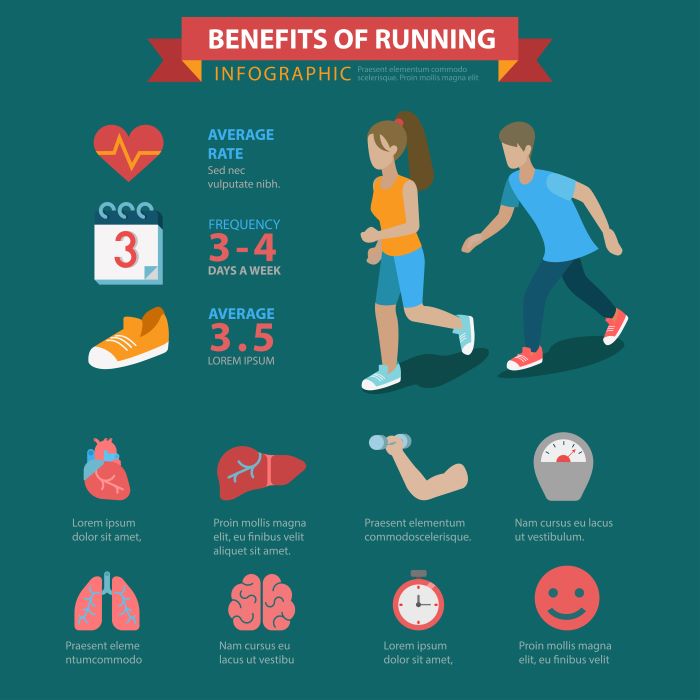Embarking on a half marathon journey is an exhilarating experience that combines the thrill of competition with the joy of personal achievement. In Australia, the best half marathon training plan is designed to cater to runners of all levels, from beginners to seasoned athletes. These plans not only enhance your endurance but also help you develop the necessary skills to tackle the unique challenges presented by the diverse Australian terrain.
Training for a half marathon typically spans over a period of 10 to 14 weeks, allowing ample time for your body to adapt to the increasing mileage. This structured approach is crucial for building stamina and minimizing the risk of injury. A comprehensive training plan often includes:
- Long runs: Essential for improving cardiovascular endurance, these runs gradually increase in distance each week.
- Speed workouts: Incorporating intervals and tempo runs to enhance your pace and running efficiency.
- Rest days: Vital for recovery, these days allow your muscles to heal and grow stronger.
- Cross-training: Activities like cycling or swimming can help maintain fitness while reducing the impact on your joints.
As you dive into your training, it’s important to stay motivated and connected with the vibrant running community in Australia. This support can make a significant difference in your training journey. Visit our website to learn more and get started today! Click here.
Key Components of an Effective Half Marathon Plan

Creating an effective half marathon training plan involves several key components that work synergistically to prepare you for race day. Understanding these elements can help you optimize your training routine and achieve your personal best.
1. Base Mileage: Establishing a solid base mileage is crucial. This means gradually increasing your weekly running distance, allowing your body to adapt to longer distances. Aim for a consistent weekly mileage that gradually increases by no more than 10% to prevent injury.
2. Long Runs: Incorporating long runs into your schedule is essential for building endurance. These runs should be conducted at a comfortable pace, allowing you to develop the stamina needed for race day. Typically, long runs should be scheduled every week or every other week, progressively increasing in distance.
3. Speed Work: To enhance your overall performance, adding speed workouts is vital. This can include interval training, tempo runs, or fartlek sessions. These workouts help improve your running economy and increase your lactate threshold.
4. Rest and Recovery: Incorporating rest days is as important as training days. Rest allows your muscles to recover and rebuild, thus preventing burnout and injuries. Active recovery, such as light stretching or yoga, can also be beneficial.
5. Nutrition and Hydration: Fueling your body properly is essential during this training phase. Focus on a balanced diet rich in carbohydrates, proteins, and healthy fats, and ensure adequate hydration before, during, and after your runs.
By integrating these components into your half marathon training plan, you’ll be well-equipped to tackle the challenges ahead and cross the finish line with confidence.
Choosing the Right Half Marathon Training Schedule

Selecting the right half marathon training schedule is pivotal in achieving your running goals. With various plans available, it’s essential to align your choice with your current fitness level, lifestyle, and race day objectives.
1. Assess Your Experience: If you’re a beginner, look for a plan that focuses on gradual mileage increases, incorporating walk breaks and emphasizing consistency over speed. More experienced runners may benefit from schedules that include speed work and higher mileage to push their limits.
2. Consider Your Time Commitment: Evaluate how many days a week you can dedicate to training. If you have a busy schedule, a plan with fewer running days but longer workouts may be more manageable. Conversely, if you have more flexibility, a plan with multiple running days and varied workouts could be advantageous.
3. Training Duration: Most half marathon training plans range from 10 to 16 weeks. Choose one that allows ample time for adaptation and recovery, particularly if you are increasing your mileage significantly. Ensure the plan has a tapering phase to help you rest before race day.
4. Flexibility and Customization: Look for a schedule that offers flexibility. Many runners face unexpected life events or fatigue; having the ability to adjust your plan is crucial. Some plans provide alternatives for missed workouts or offer cross-training options, which can enhance overall fitness.
5. Seek Expert Guidance: If you’re unsure about which plan to follow, consider consulting with a running coach or joining a local running group. They can provide tailored advice and support to help you select the most effective training schedule for your goals.
By thoughtfully choosing a training schedule that matches your needs, you’ll set yourself up for success and enhance your enjoyment throughout the preparation process.
Essential Tips for Training Success in Australia

Training for a half marathon in Australia comes with its unique set of challenges and opportunities. To ensure your training is effective and enjoyable, consider these essential tips tailored specifically for the Australian environment.
1. Adapt to the Climate: Australia is known for its variable weather conditions. During the warmer months, aim to run during cooler parts of the day, such as early mornings or late evenings. Conversely, in cooler months, be mindful of layering appropriately to stay warm without overheating.
2. Utilize Local Trails: With Australia’s stunning natural landscapes, take advantage of local trails and parks. Trail running not only adds variety to your training but also strengthens different muscle groups and improves your balance. Make sure to choose trails that match your skill level to avoid injuries.
3. Stay Hydrated: Hydration is crucial, especially in Australia’s heat. Incorporate regular water breaks during your runs, and consider carrying a hydration pack or belt for longer distances. Additionally, replenish electrolytes after intense workouts or long runs to maintain energy levels.
4. Join a Running Community: Engaging with a local running group can provide motivation and support. Many communities host regular runs, offering training tips, camaraderie, and a chance to share experiences. This can be particularly beneficial for beginners seeking guidance.
5. Incorporate Cross-Training: To enhance your overall fitness and reduce the risk of injury, include cross-training activities like cycling, swimming, or strength training in your weekly routine. These activities can improve your cardiovascular endurance while also giving your running muscles a break.
6. Listen to Your Body: Pay attention to any signs of fatigue or injury. Rest days are as important as training days; they allow your body to recover and build strength. If you experience pain, don’t hesitate to adjust your training plan or seek professional advice.
By integrating these tips into your training routine, you can set yourself up for a successful half marathon experience while enjoying the diverse landscapes and climates that Australia has to offer.
Nutrition and Recovery Strategies for Runners
Nutrition and recovery play a pivotal role in a runner’s performance, particularly for those training for a half marathon. Proper fueling and recovery techniques can significantly enhance your endurance, speed, and overall health.
1. Balanced Diet: A well-rounded diet rich in carbohydrates, proteins, and healthy fats is essential for runners. Carbohydrates provide the energy needed for long runs, while proteins are crucial for muscle repair. Include a variety of foods such as whole grains, lean meats, fruits, and vegetables to meet your nutritional needs.
2. Pre-Run Nutrition: Fueling your body before a run can improve performance. Aim to consume a meal or snack that is high in carbohydrates and moderate in protein about 1-3 hours before running. Options like a banana with peanut butter or a bowl of oatmeal can provide the necessary energy boost.
3. Post-Run Recovery: Recovery starts the moment you finish your run. Replenish lost fluids by drinking water or an electrolyte drink, and consume a snack rich in protein and carbohydrates within 30 minutes. This could be a protein shake, Greek yogurt with fruit, or a turkey sandwich.
4. Stay Hydrated: Maintaining hydration throughout your training is key. Aim to drink water consistently throughout the day and increase your intake before, during, and after your runs. If you’re running long distances, consider carrying water or electrolyte supplements to stay hydrated.
5. Incorporate Rest Days: Allowing your body to recover is just as important as training. Schedule regular rest days or light activity days into your plan to prevent overtraining and reduce the risk of injury. Use this time for gentle stretching, yoga, or foam rolling to aid muscle recovery.
6. Listen to Your Body: Pay attention to how your body responds to different foods and recovery strategies. Everyone’s nutritional needs are unique, so track your energy levels, mood, and performance to adjust your diet and recovery plan accordingly.
By focusing on nutrition and recovery strategies, you can optimize your training and improve your chances of achieving your half marathon goals.
Join the Running Community for Motivation and Support

Engaging with a running community can be a transformative experience for any runner, especially those preparing for a half marathon. The motivation and support found within these communities can significantly enhance your training journey.
1. Shared Experiences: Being part of a running group allows you to share your experiences, challenges, and successes with like-minded individuals. This shared journey fosters camaraderie and provides a sense of belonging, which can keep you motivated during tough training phases.
2. Accountability: Training with others creates a sense of accountability. When you have scheduled group runs, you’re more likely to stick to your training plan. Knowing that others are counting on you can push you to lace up your shoes even on days when motivation is low.
3. Expert Guidance: Many running communities host experienced coaches and seasoned runners who can offer valuable insights and tips. From improving your running form to refining your race strategy, having access to expert advice can accelerate your progress and enhance your performance.
4. Social Events: Beyond just training, many running communities organize social events, races, and fun challenges. These activities not only build friendships but also add an element of fun and excitement to your running journey. Participating in community races fosters a spirit of competition and achievement.
5. Online Support: If in-person groups are not accessible, many communities have a vibrant online presence. Social media platforms and forums provide a space to connect, share tips, and cheer each other on, ensuring you stay engaged and supported from anywhere.
Join the vibrant running community today and unlock a world of motivation and support that can elevate your training experience. Visit our website to learn more and get started today! Click here.


